Ear for voice recognition principle
Commonly known as the voices tell the position that people in the future to hear the sound, can identify the direction from which the sound is spread over, and the sound propagation in different environments is not the same, this is the human ear to sound sense of direction of action .
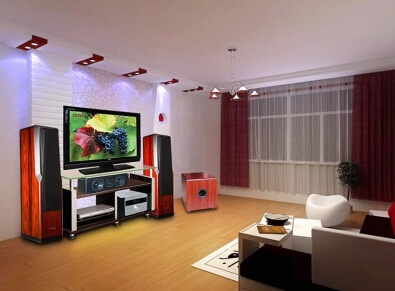
The sound source position sense, auditory organ sound pitch, sound intensity, timbre, tone and a long beyond feeling feeling element, it relates to the issue of complex physiological psychology. At the same time, a sense of direction is a stereo sound source theory techniques.
First, the time difference, the phase difference and level difference, the tone difference
Binaural effect principle whereby positioning is the time difference, phase difference, level difference, sound color.
(A) the time difference and the phase difference
Time difference mainly refers to binaural sounds moment has arrived differences. Sonic at room temperature, the speed of propagation of 344m / s, when the sound source deviates from the central axis in front of the listener, the distance between the ear and the ear B A simultaneous difference between sources, which appear sound reaches the ear and ear B of A between the time difference.
Time difference as the sound source localization mechanism, high sound localization accuracy of the front and sides of the sound source localization from behind the errors. The reason is not very clear. Probably because the sound from the back side, left or right ear because of ear shell shadowing effect produced, so that the sound changes due to diffraction difference.
Because the human ear to sound adaptive, when the sound reaches the basement of a sudden, excited and sensitive hair cells exhibit. When the sound continued stimulation of hair cells response is relatively slow. So sudden sound source localization and transient sound higher accuracy.
A rapid flow of the sound source, will attract the attention of hearing. Therefore, changing the orientation of the sound of the human ear to its orientation identified error is smaller. This is why modern stereo sound shift program appears.
A continuous sound, although there is a time to reach the ears are bad, but because the follow-up to achieve the same sound only cover the front of the ear sounds, so the time difference becomes obvious.
High-frequency and low-frequency acoustic sound propagation speed is the same, so the time difference between the simultaneous independent of frequency source. However, simultaneous phase source frequency. When a sound reaches the ears, also appear in the time difference between the ears, but also inevitable phase. In a certain frequency range, the phase difference is one sense of direction of a sound source of information.
Phase positioning mechanism at low frequency effect is more obvious. For example, at room temperature in the wavelength of sound is 20Hz 17m, 200Hz is 1.7m, the time difference retardation who formed the ear can feel. And when the sound source is a high-frequency region, such as 10kHz wavelength 85px, 20kHz is 42.5px, phase time difference caused by even more than 360 °, equal to the start of another wavelength. At this phase difference as the positioning information is no longer any effect, because it has been unable to distinguish the phase belonging to lag or lead. Thus the high-frequency sound are "chaotic phase" information.
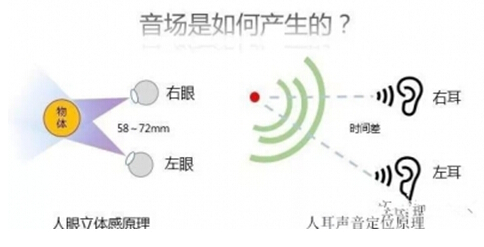
(Ii) the difference between the level difference and tone
Level difference means the sound waves reach the ears there are different intensity. Level difference is mainly due to the formation of the shadowing effect. Sonic forward in case of geometry is equal to or greater than the wavelength of the sound barrier, shadowing effects occur. The principle is: high-frequency sound when the spread of an obstacle, due to inability to cross the barrier, forming a sound barrier behind the shaded area; low-frequency sound waves grew to an obstacle in the formation of sound diffraction zone behind an obstacle. The sound level difference plays an important role in high-frequency sound, because the high-frequency sound waves can not bypass the listener's head, so in that ear than the sound of the shaded area to hear the direct sound of that ear, sound intensity level a difference. The higher the frequency, the sound source front axis deviation greater the level difference the more overtly.
From the perspective of diffraction effects, the low frequency sound will form a sound level difference of course. But as the head diameter of about 500px, diffract when low frequency sound, to walk away limited, due to diffraction loss of energy is small, thus departing from the axis of the low-frequency sound to reach the ears of the sound level difference is close to zero, for sound source localization is not obvious.
While shadowing effects have an effect on the sound level difference is also bound to play a role tone poor. We know that the main component is a component of the base tone sounds and above all the harmonics. For example, a base frequency of 200Hz, the angle of incidence of the composite wave point source 45 °, then it is based on sound and low-order harmonic generation diffraction effects encountered after head trauma, the higher harmonics were head section shutter shaded areas and the emergence of high-frequency sound. In this case, the sound reaching one ear to direct sound (original sound), sound from the other side to reach the ear of the high-frequency loss due to leaving the tone changed. According to the cerebral cortex Voice ears to recognize the difference between the sound source orientation. Thus, the tone difference frequency signal is another reflection of the level difference.
It should be noted, forming tone poor mainly those fundamental frequency at 60Hz or more complex sound source. Because the sound below 60Hz harmonic wavelength greater encountered head size (diameter about 500px) does not create obstacles to the shadowing effect. For example, the fundamental frequency is 30Hz sound, its 16th harmonic is 480Hz, the wavelength of 0.716m, many wavelengths larger than the diameter of the head, do not form a distinct difference in tone between the ears, the 17, 18 harmonics , strength is weak, to constitute meaningful tone. Thus, the sound 60Hz or less than the frequency, the accuracy of the sound source frequency sound sense of direction is lower.
Poor strength and tone difference from the effect of the binaural effect, you can imagine, pure tone than the composite sound difficult to locate, because the pure tone is a sine wave (a single wave), can not be constructed timbre difference.
(Iii) a sense of the depth of the sound source
A sense of depth is the distance from the sound source listeners the sound source, so a sense of depth, also known as a sound source from the sound source localization.
A sense of the depth of the sound source is often linked with a digital mode. When we hear a sound, we feel that in addition to the general direction of the sound occurs, it will also feel the approximate distance of the sound occurs. To accurately feel the depth of the sound source, the sound field will have to be familiar with the environment, the familiar sound source sound, or directly by means of visual and sound source to measure their distance. It showed a sense of the depth of the sound source is acquired form, it can be trained.
Location is determined primarily by the depth extent of acoustic attenuation. Acoustic radiation process, the energy loss with propagation distance, the first harmonic is relatively small in amplitude to decay, forming a program change. After the human ear to hear the sound signals, sound signals stored for comparison with the brain, in order to determine the depth of the sound signal of the sound source.
Another approach is the sense of depth source of comparative law. When there are several sound sources (Array sound source) is different from the presence of the human ear can point source close to infer the depth of other sound sources. Array sound source a number of different distances and angles of incidence point source formed so that the width of the sense of hearing and sense of encirclement produce sound. Then repeat the sentence: sound source is usually a sense of depth in parallel with the visual, visual form by experience, by visual help pinpoint.
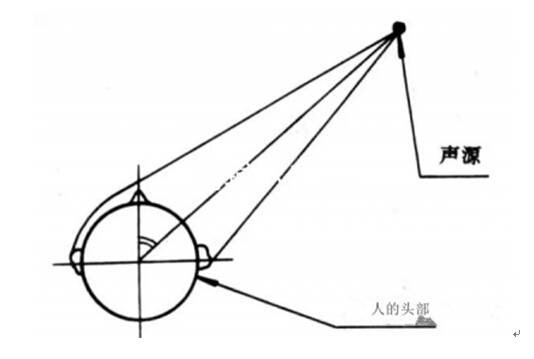
(Iv) A combination of the time difference and sound level difference
All differences binaural effect generated by the sense of direction of the sound source can effect may occur in isolation. When they are combined with each other, the combined effect is produced. If their role opposite (under normal circumstances rarely happens), they did not just cancel each other out. Modern practice proved sound technology, the combination of the time difference and sound level difference, a sense of direction to the sound source effect is very obvious. Experiments show that, under certain conditions, 1ms time difference is equivalent to 5? 12dB sound level difference, the relationship interchangeable.
In a reverberation time than normal acoustic requirements of the hall, the sound source reflected sound, reverberant sound level much higher than its direct sound. At this time, the human ear to stimulate the sound source of the first wavefront of the most sensitive, if the reflected sound and direct sound reverberation delay for 40? 60ms, the human ear is still possible to grasp the sound source orientation. If the delay is more than this range, the human ear can not distinguish the original vocal harmonies to reach the ears of the time difference differential, it will have separate sense of direction, a sense of direction or confusion. That is why a heavy echo in the hall, people often do not easily grasp the orientation of the sound source, you need to use eye positioning of the reason.
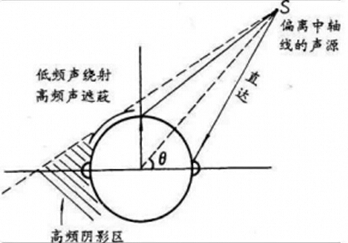
Second, a sense of direction sound source mechanism
Classical psychoacoustic think, people mainly rely on sound sources feel the difference binaural listening, called binaural effect. As his eyes observe the scenery generate a sense of perspective, three-dimensional, like binaural perception of sound by the strength of the difference can be determined to produce stereo sound sense to. Until modern times, binaural effect is still the main rationale sense of direction of the sound source. But in recent years, experts found people monaural hearing loss, there are still sound source orientation judgment, therefore, put forward a new theory ears effect, sound source theory more perfect sense of direction.
Sense of direction of the sound source mechanism is very complex. Binaural principle that: Since the position of the head two ears is, if the sound source in front of the people of the axis, the sound reaches the ears of the time, the sound intensity level and phase are the same; if the deviation from the sound source listeners in front of the central axis, the sound reaches the ears of varying distances, so the sound reaches the ears will be the time difference and phase difference. Meanwhile, the shadowing effect occurs because one ear and thus sound level difference occurs between the ears, sounds worse.
Sound source with a sense of direction is innate physiological functions, but the sound source orientation width, depth and all digital-related sense, the experience acquired with a person concerned.
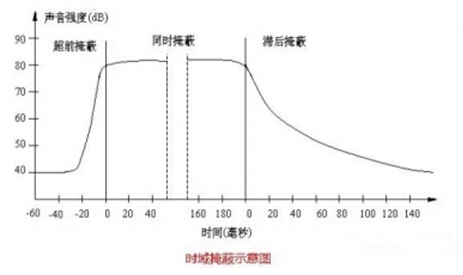
Third, the ear shell effect
As early as a hundred years ago, it was found that one ear deaf, there is still the ability to identify the orientation of the sound source, and proposed a vision ears effect, but not for people to pay attention. Until this century, the sixties, when the sound technology has made rapid progress, it was recognized that binaural sound source azimuth for some inexplicable feeling, so ears effect was able to be re-understanding.
When we mention age, may have done some interesting experiments, such as the ears, the ear pull it into a ride, then we feel that outside voice suddenly change into clear; if thrown back by the stick of the skull, You will find that voice weakened. As mentioned earlier, there is reflection and ears gather sound functions. At the same time due to the uneven ears, therefore, reflected sound different parts of the ear shell produced, slightly later than the direct sound into the ear drum, form a repeating sound than the direct sound very short amount of delay, repeat sound than the direct sound of the amount of delay due to the angle of incidence varies.
Ear shell effects in judging the sound from behind the listener is also effective. When a voice from behind the ears to block the sound of high-frequency harmonics, so that, compared with the sound source in front, there is a clear difference in tone; at the same time, due to the masking effect of the ears, from behind the sound will no heavy sound. Auditory area of the brain that information with conventional control signal is compared to arrive at a given sound source from behind.
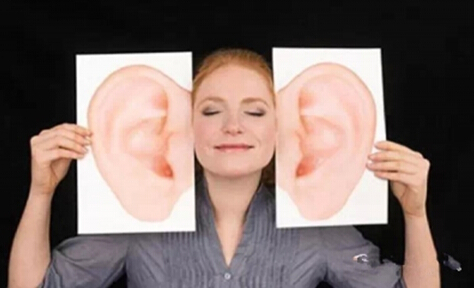
Four, monaural effect
Monaural effect refers to the principle of a single-ear binaural listening range positioning. Without a doubt, a normal binaural hearing ears to listen mainly to identify the orientation of the sound source. However, an interesting fact tells us that people are not average ears to listen to the sound, and focused use of one ear.
For example, when a point source, occurs when listeners near the left axis deviation of 35 °, listeners hear the sound while measuring the general direction of the sound source; and if the listener is the source of the sound attracted by the sound, then will head turned to the left 35 ° so that their central axis aligned with the sound source, in order to use binaural (both eyes simultaneously) to identify the exact location of the sound source; if the sound source and still be accurately measured when the attraction to further strengthen the listener will head turned to the right toward the direction of the sound source, with the left ear closer to the sound source, until you find the exact location of the sound source so far. This process, that judgment → correction → homing trilogy, reflecting the auditory localization systemic coordination mechanism, at the same time explain the importance of listening in one ear location.
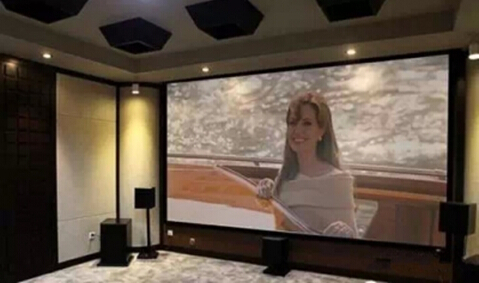
Fifth, the bone conduction positioning mechanism
Binaural effect principle, monaural effect and ears effect to auditory localization provided the main basis for a sense of direction seems sound source mechanism hearing organ has been fully answered. However, careful thought, auditory localization mechanisms found in some details have not been entirely reasonable explanation. For example, from a sound source behind the listener, the human ear is how to identify out. Binaural effect in accordance with the principles and ears effect, recognize the sound from behind, mainly based on the ears shadowing effect, formed behind the sound and positive voice tone is poor, and this feeling tone poor brain auditory experience by comparison to the past . Tests show that a three-month baby will be able to judge the sound from behind, the same way that an adult can determine a sound from behind and had never heard of. Thus, the positioning of the sound source behind the human ear can not simply be attributed to the difference in timbre.
Experts believe that certainly there is a hearing function, to assist the people behind the ear to judge from the sound source orientation. This function is to locate bone conduction mechanism.
About the possibility of bone conduction positioning has always been controversial, the focus of the dispute is not whether the transmitted sound skull, but rose from the outside world how sound waves into the air conduction bone mass. Some scholars believe that when, in the course of propagation of sound waves from one medium into another medium, on the boundary between two different media reflection and the incident occurs, the incident and the skull according to Newton's second law, sound waves can be calculated Sound highly reflective. After calculation, the sound intensity level of the reflected wave of 99.89% dB, the incident was only 0.00003% dB, which indicates that almost all the external acoustic energy is reflected out, therefore we find that the bone conduction positioning function does not actually exist.
The key issue is the presence of absence of the incident, if acknowledged the existence of the incident, then the proportion of even a very small amount of energy, above the critical limit, the human ear can feel it.
Hair cells on the cochlea can feel displaced since 1/10 angstrom (equivalent to a nitrogen atom of 1 angstrom diameter) of vibration, then, the human ear can feel the bone conduction trace incoming sound information.
We know, deep in the ear in the head on both sides about 114.99999999999999px of here and head away from the appearance of various parts of the range, the head is on the outer part of the sound source into the formation of bone conduction time difference between the cochlea sound waves, and between the ears there is also bone conduction time difference. Acoustic wave propagation velocity in the skull of 3013m / s, air conduction velocity of 344m / s, from the appearance of various parts of the head and ears about 4.6 ~ 385px, to this end, there is a time difference between the direct sound and the bone conduction air conduction direct sound, the brain Bone conduction hearing according to the time zone and the time difference between bone conduction and air conduction difference quickly determine the orientation of the sound source.
In theory, the bone conduction positioning function is comprehensive, and therefore, the positioning mechanism has a bone conduction effect of sound waves from the front, side, rear and top of the head. However, bone conduction positioning is complementary, secondary, complements the binaural effect and monaural effect, ear shell effects.






















